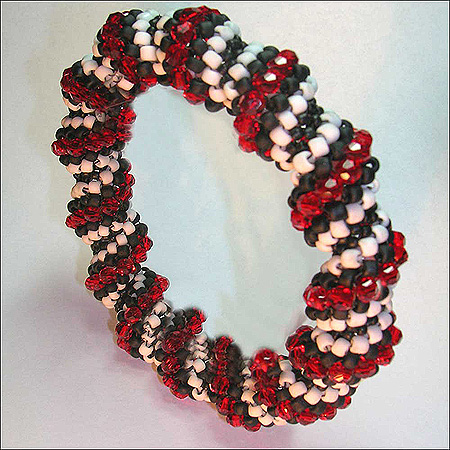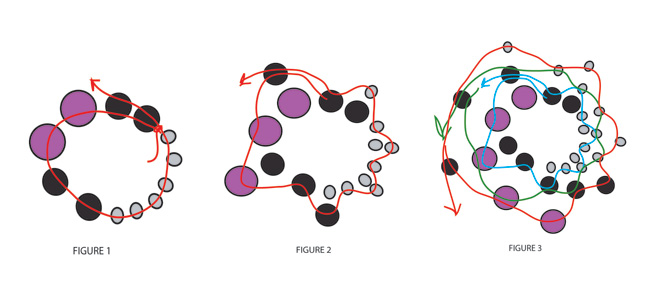 |
www.beadsbaublesandjewels.com |
| 1602-2 | Print | Close [X] |
Leslie Rogalski demonstrates a seed bead spiral peyote bracelet featuring crystal highlights.
|
For More Information Visit: www.eksuccessbrands.com  www.eksuccessbrands.com www.beadalon.com |
Size 11° seed beads (A) silver 1" of spiral peyote tube requires about 40 of the 2mm and 20 of the 3mm beads. Repeat from * working in tubular even-count peyote for desired length. Always pass through 2B at the end of each round (after the section of A beads) to step up for the next round (FIGURE 3). TIPS Thread tension is critical. Make sure the beads are pulled into position as you work. Allow the smaller beads to cup inwards when you stitch with them so they sit closer together. This is what makes the spiral look like a spiral. Leave a tail when ending and starting thread to find your new starting place easily. Add thread within smaller beads to get maximum friction security. Leave the tail from the previous thread until securing the new thread and starting a few stitches. The spiral won’t be very evident until several rounds are completed. The tube opening may appear to be oval due to the cupping in of the smaller beads. TROUBLESHOOTING
For more information about Leslie visit www.leslierogalski.com. |
Leslie Rogalski & Katie Hacker |

